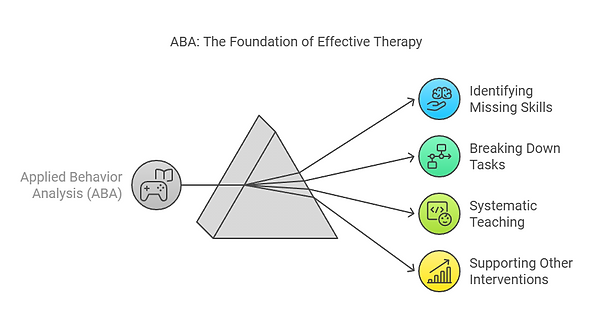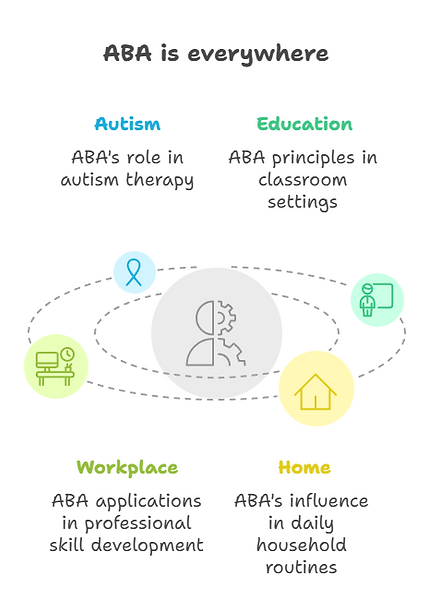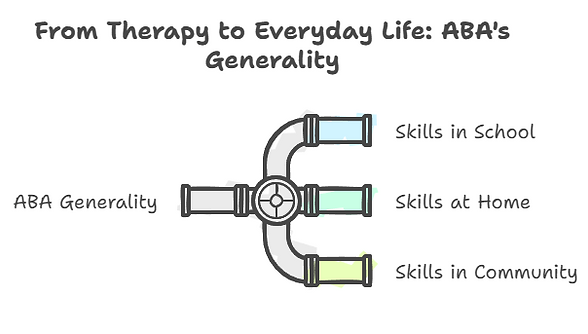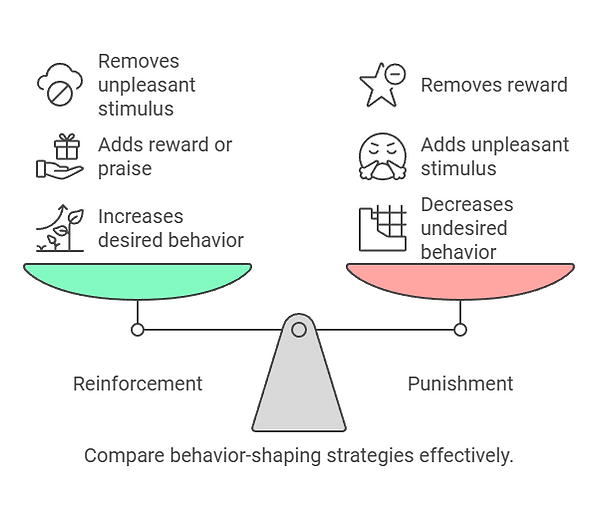
Why ABA is Essential in Any Intervention
Applied Behavior Analysis (ABA) is a natural science, just like physics and biology. It studies how behaviors work and how to change them in a meaningful and positive way. ABA is based on the idea that behaviors are learned, and through the right strategies, we can teach new skills and help individuals grow.
Consider a scenario where a child is expected to perform a specific task in an intervention, but they are unable to do so. For example, in speech therapy, the ability to imitate sounds and mouth movements is essential, or in occupational therapy, the ability to follow instructions is crucial. If these foundational skills are missing from the child's repertoire, it can make the therapy seem ineffective.
This is where ABA plays a vital role. ABA helps identify and teach these missing skills by breaking down complex tasks into manageable steps. Through consistent, systematic teaching, ABA can help the child acquire the basic skills needed for more advanced interventions to be successful. Without ABA, the foundation needed for effective learning and therapy could be lacking, making it harder for the child to benefit fully from other treatments.

Think of ABA as a tool for learning, just like applying the laws of physics when building a bridge. To make sure learning is efficient and effective, ABA provides a systematic approach to teaching. It helps break down complex tasks into smaller, manageable steps, making it easier for individuals, especially those with learning difficulties, to grasp and master new skills.
While ABA is often associated with autism, it’s not exclusive to it. In fact, ABA is part of everyday life. Whenever learning happens—whether it’s in school, at work, or at home—ABA is at play. Every time someone learns a new skill, behavior, or habit, it’s through principles of ABA.
ABA focuses on creating structured learning environments where complex skills can be broken down into smaller, achievable steps. This makes it especially effective for individuals with learning difficulties, helping them learn at their own pace and succeed in areas they may have struggled with otherwise.



One important dimension of ABA is ensuring that any changes we produce in behavior are not only effective but also sustainable. This concept, known as generality, means that the skills learned through ABA should maintain over time and be transferred across different settings. For example, if a child learns a new skill in a therapy room, we want to make sure they can apply that skill in school, at home, and even in the community. ABA ensures that the positive changes we make are lasting and can be generalized to various environments.
ABA is a science-based approach that makes learning easier, more effective, and accessible for everyone, no matter their background or learning ability. It’s a powerful tool that helps individuals reach their full potential, step by step, and ensures that changes are meaningful and lasting across different aspects of life.
.png)
How is ABA Implemented?
.png)
Two Key Principles of ABA
Illustrative Example
*Note: This example is cited purely for illustrative purposes. Every child is different, and such strategies may or may not work for your child. ABA interventions are individualized, and strategies should be tailored to each child’s unique needs and circumstances. Contact us today to create an individualized treatment plan for your child.
Setting: A child is not raising their hand to speak during class, often blurting out answers instead.
Behavioral Goal: To increase hand raising behavior and to reduce behavior of blurting out.
-
Reinforcement to Shape Behavior:
-
Positive Reinforcement: Every time the child raises their hand before speaking, the teacher gives them praise ("Great job raising your hand!"). This encourages the child to raise their hand more often because they enjoy the positive attention and praise.
-
Negative Reinforcement: If the child stops blurting out answers and raises their hand, the teacher might allow them to avoid extra homework. This removes the negative consequence, reinforcing the child’s positive behavior of waiting to be called on.
-
-
Punishment to Decrease Undesired Behavior:
-
Positive Punishment: If the child blurts out an answer, the teacher might give them a consequence, such as a timeout. This discourages the child from blurting out answers again, as they learn the behavior leads to an unpleasant outcome.
-
Negative Punishment: If the child continues to blurt out answers, the teacher might take away a privilege, like recess time. This removal of something enjoyable decreases the chances of the undesired behavior happening again.
-
Through consistent application of reinforcement and punishment, the child learns to raise their hand before speaking and reduces the behavior of blurting out answers.
.png)




